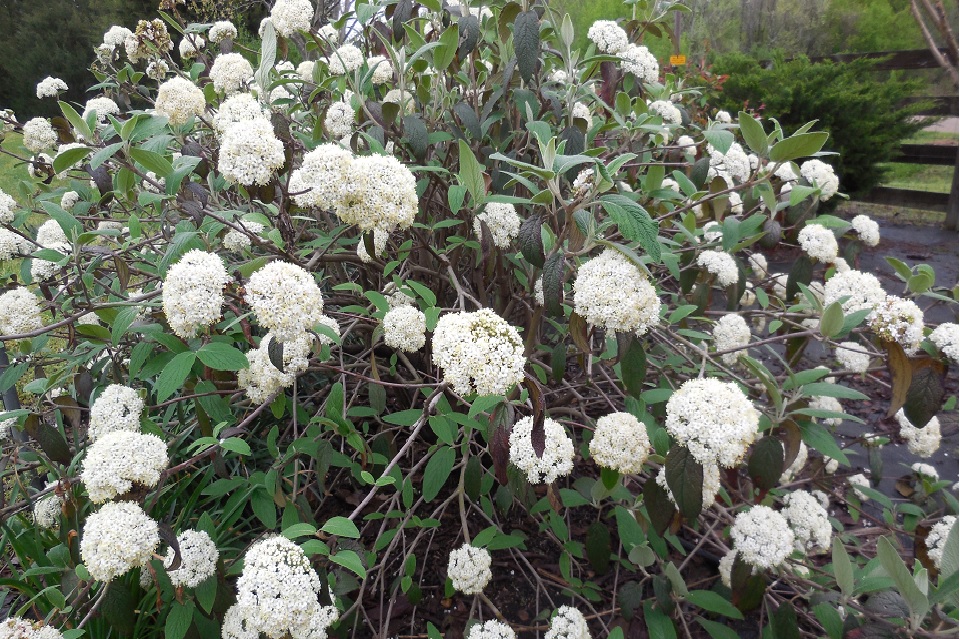
A Beautiful Shrub with Four-Season Interest
UT Gardens’ February 2018 Plant of the Month: Alleghany Viburnum
Submitted by Joellen Dimond, UT Extension Tipton County
The Alleghany viburnum, known scientifically as Viburnum xrhytidophylloides ‘Alleghany’, is a large, robust semi-evergreen shrub that is worthy of adding to any landscape. It has dark, leathery, green leaves that are resistant to bacterial leaf spot. The stiff branching habit is softened by the tomentose, or woolly gray-brown stems and under sides of leaves. This woolly plant can be irritating to skin, so wear gloves when pruning. It is best left to develop its 10 to 15 foot vigorous, dense habit naturally. The foliage makes an excellent coarse-textured plant for screens or large areas. Mixing with other plants of different textures creates an impressive-looking landscape.
Alleghany viburnum leaves turn purple in the winter and may persist even when temperatures reach into the single digits with ice and snow. White flowers three to four inches in diameter appear in spring. Their display on branch tips looks gorgeous against the dark green foliage.
Alleghany viburnum is one of several cultivars originally produced by crossing Viburnum rhytidophyllum and Viburnum lantana in 1925 in the Netherlands. Alleghany was developed in the U.S. and released in 1966. It is adaptable to most soils; however, it does not like wet soil. Sun to part shade sites are preferred. Flowers are more plentiful when the shrub has sufficient sunlight. Red, ripening to black, fruit will appear in August through September. Birds are attracted to these drupes, but fruit production requires cross-pollination. Use another cultivar resulting from the cross, or use one of the parent species, Viburnum rhytidophyllum or Viburnum lantana.
You can see a specimen of Alleghany viburnum at the UT Gardens, Knoxville.
Once established, Alleghany viburnum is drought tolerant and does not have insect or disease problems. It transplants easily and is trouble free to maintain. Its four-seasons of interest include beautiful foliage, flowers and fruit, which add up to one nice shrub for the landscape.
The UT Gardens includes plant collections located in Knoxville, Jackson and Crossville. Designated as the official botanical garden for the State of Tennessee, the collections are part of the UT Institute of Agriculture. The Gardens’ mission is to foster appreciation, education and stewardship of plants through garden displays, educational programs and research trials. The Gardens are open during all seasons and free to the public. For more information, see the Gardens website: ag.tennessee.edu/utg.
Contact:
Joellen Dimond, UT Extension Tipton County, 901-476-0231, jdimond@utk.edu